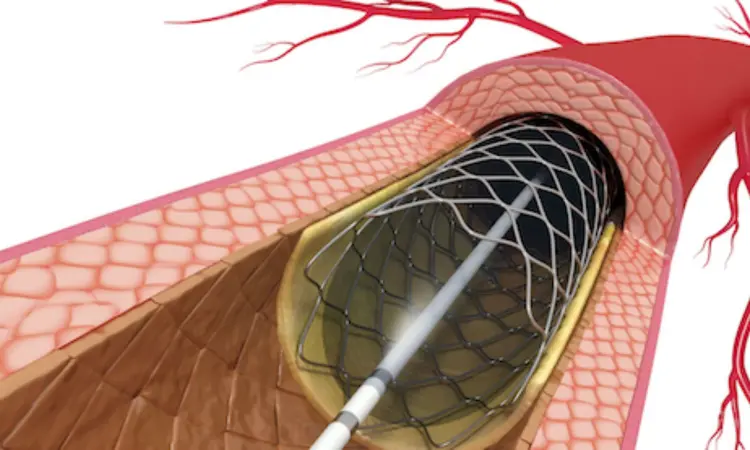- Home
- Medical news & Guidelines
- Anesthesiology
- Cardiology and CTVS
- Critical Care
- Dentistry
- Dermatology
- Diabetes and Endocrinology
- ENT
- Gastroenterology
- Medicine
- Nephrology
- Neurology
- Obstretics-Gynaecology
- Oncology
- Ophthalmology
- Orthopaedics
- Pediatrics-Neonatology
- Psychiatry
- Pulmonology
- Radiology
- Surgery
- Urology
- Laboratory Medicine
- Diet
- Nursing
- Paramedical
- Physiotherapy
- Health news
- Fact Check
- Bone Health Fact Check
- Brain Health Fact Check
- Cancer Related Fact Check
- Child Care Fact Check
- Dental and oral health fact check
- Diabetes and metabolic health fact check
- Diet and Nutrition Fact Check
- Eye and ENT Care Fact Check
- Fitness fact check
- Gut health fact check
- Heart health fact check
- Kidney health fact check
- Medical education fact check
- Men's health fact check
- Respiratory fact check
- Skin and hair care fact check
- Vaccine and Immunization fact check
- Women's health fact check
- AYUSH
- State News
- Andaman and Nicobar Islands
- Andhra Pradesh
- Arunachal Pradesh
- Assam
- Bihar
- Chandigarh
- Chattisgarh
- Dadra and Nagar Haveli
- Daman and Diu
- Delhi
- Goa
- Gujarat
- Haryana
- Himachal Pradesh
- Jammu & Kashmir
- Jharkhand
- Karnataka
- Kerala
- Ladakh
- Lakshadweep
- Madhya Pradesh
- Maharashtra
- Manipur
- Meghalaya
- Mizoram
- Nagaland
- Odisha
- Puducherry
- Punjab
- Rajasthan
- Sikkim
- Tamil Nadu
- Telangana
- Tripura
- Uttar Pradesh
- Uttrakhand
- West Bengal
- Medical Education
- Industry
Residual angina after PCI common in patients with low pullback pressure gradient: JACC

Belgium: In patients with low pullback pressure gradient (PPG; diffuse disease), residual angina after PCI is almost twice as common, whereas patients with high PPG (focal disease) showed more significant improvement in quality of life and angina, according to results from a single-centre study. The study was featured in JACC: Cardiovascular Interventions.
An increase in FFR (fractional flow reserve) after PCI (percutaneous coronary intervention) is linked with improvement in angina. Patterns of coronary artery disease (focal or diffuse) impact the change in FFR after stenting and may predict relief in angina. Carlos Collet, Cardiovascular Center, OLV Hospital, Aalst, Belgium, and colleagues aimed to explore the differential improvement in patient-reported outcomes after PCI in diffuse and focal CAD as defined by the pullback pressure gradient.
For this purpose, the authors conducted a subanalysis of the TARGET-FFR randomized clinical trial (Trial of Angiography vs pressure-Ratio-Guided Enhancement Techniques–Fractional Flow Reserve). The SAQ-7 ( 7-item Seattle Angina Questionnaire) was given at baseline and three months after PCI. The calculation of the PPG index was done from manual pre-PCI FFR pullbacks. The median PPG value was utilized to define diffuse and focal CAD. An SAQ-7 score of less than 100 was the definition of residual angina. A total of one hundred-three patient were analyzed.
The authors reported the following findings:
- The authors found no differences in the baseline characteristics in patients with diffuse and focal CAD.
- The focal disease had more significant increases in FFR after PCI than patients with the diffuse disease (0.30 ± 0.14 vs 0.19 ± 0.12).
- Focal disease patients who underwent PCI for focal CAD had remarkably higher SAQ-7 summary scores at follow-up compared to patients with diffuse CAD (87.1 ± 20.3 vs 75.6 ± 24.4).
- Residual angina after PCI was present in 39.8% but was notably less in patients with treated focal CAD (27.5% vs 51.9%).
The researchers provided a tool to refine the suitability criteria for PCI regarding refraining treatment of patients with a diffuse disease or at least raising the awareness that diffuse disease is present and that the probability of improvement of that specific patient is low.
"Residual angina following percutaneous coronary intervention was almost twice as common in patients with the diffuse disease (a low pullback pressure gradient). In contrast, patients with the focal disease (high pullback pressure gradient) showed a greater quality of life and angina improvement," the researchers conclude. "The baseline pattern of coronary artery disease can predict the likelihood of angina relief."
Reference:
The study, "Differential Improvement in Angina and Health-Related Quality of Life After Percutaneous Coronary Interventions in Focal and Diffuse Coronary Artery Disease," was published in JACC: Cardiovascular Interventions. DOI: 10.1016/j.jcin.2022.09.048
Dr Kamal Kant Kohli-MBBS, DTCD- a chest specialist with more than 30 years of practice and a flair for writing clinical articles, Dr Kamal Kant Kohli joined Medical Dialogues as a Chief Editor of Medical News. Besides writing articles, as an editor, he proofreads and verifies all the medical content published on Medical Dialogues including those coming from journals, studies,medical conferences,guidelines etc. Email: drkohli@medicaldialogues.in. Contact no. 011-43720751


